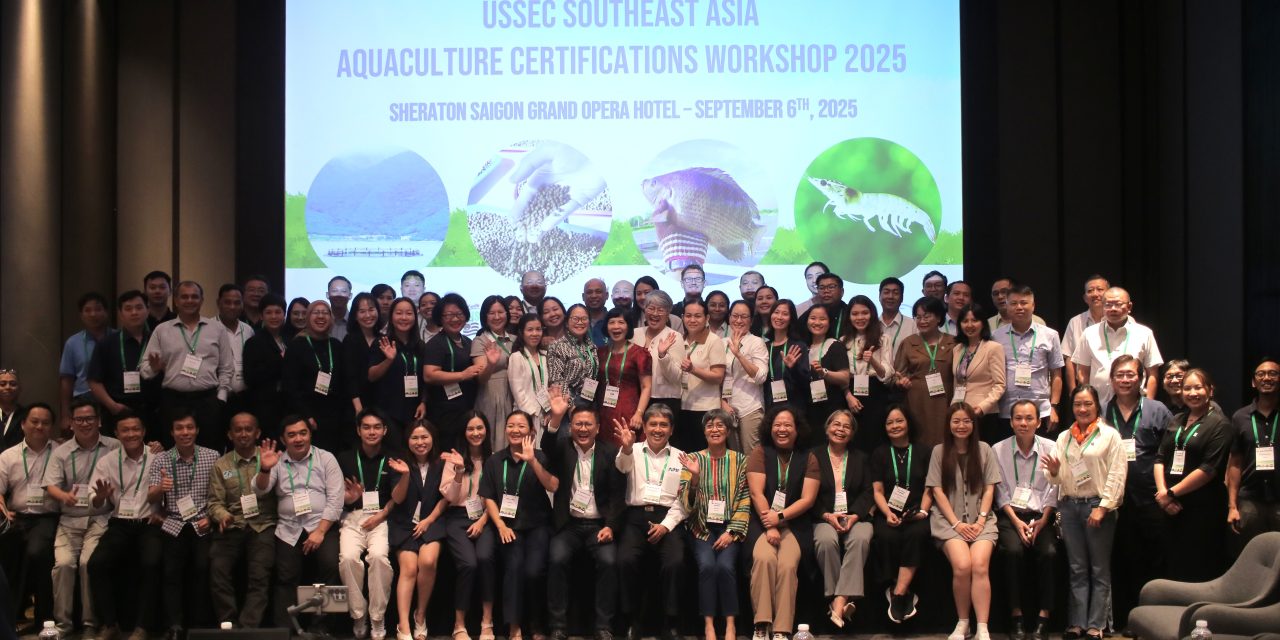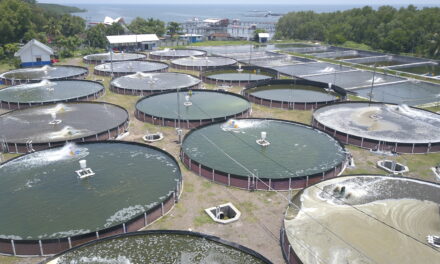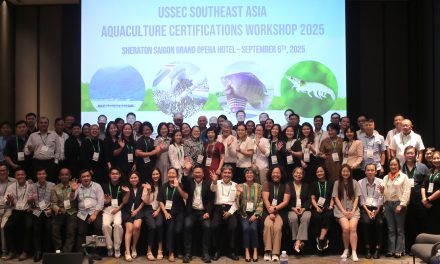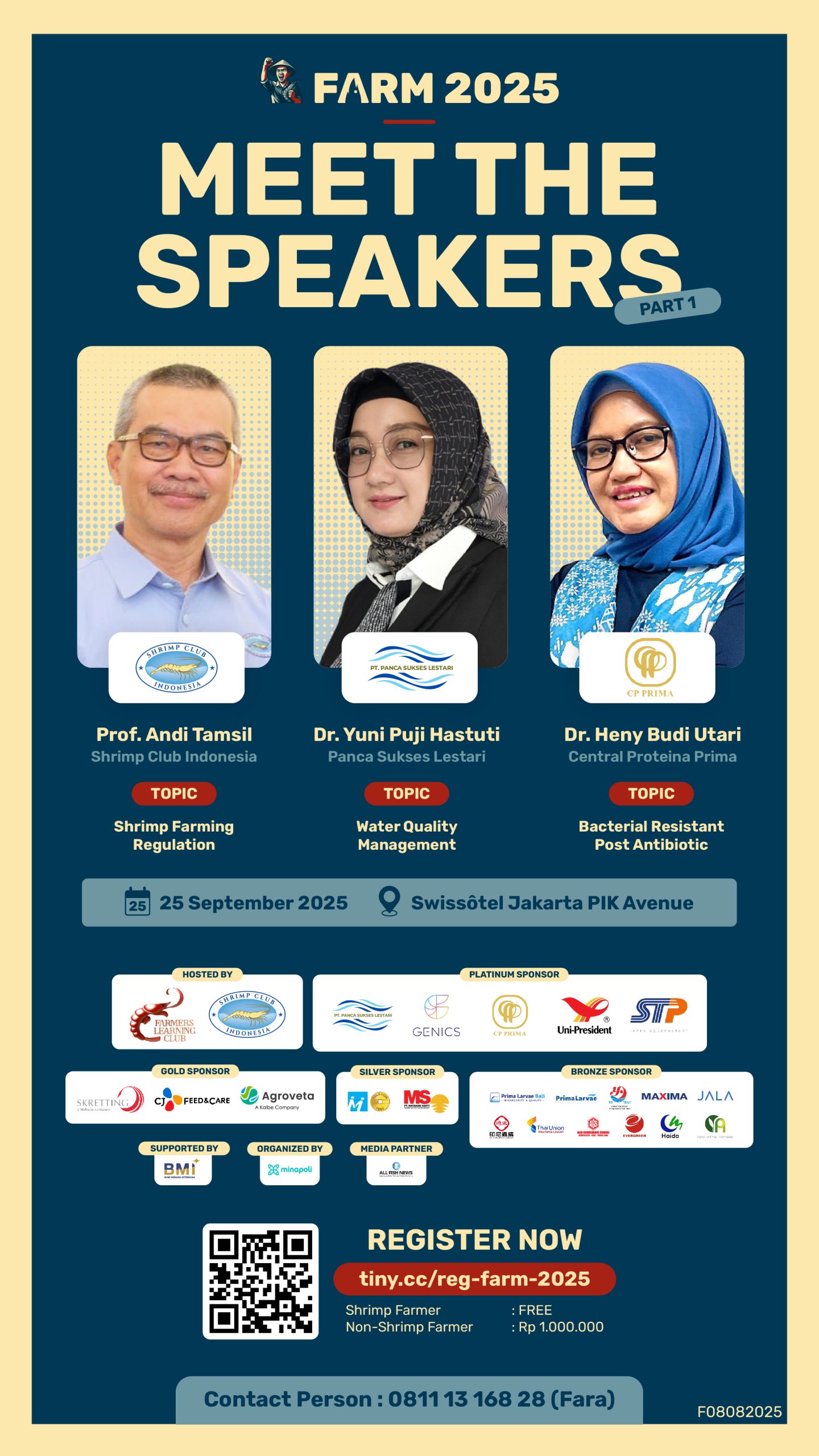To address the dynamic challenges in the aquaculture industry—such as food safety, traceability, and access to the global market—the U.S. Soybean Export Council (USSEC) recently held the USSEC Southeast Asia Aquaculture Certification Workshop 2025 in Ho Chi Minh City, Vietnam (September 6). The event brought together aquaculture stakeholders from across the value chain, with participants from several Southeast Asian countries, including Indonesia, Vietnam, Thailand, and the Philippines.
Since the early 2000s, aquaculture certification has evolved from focusing solely on food safety to becoming a key instrument for opening access to export markets, promoting sustainable practices, and addressing social and environmental concerns. Although it has faced criticism along the way, certification is now seen as a basic requirement to reach major consumer markets, while also serving as a strategy to build non-price competitiveness amid new challenges such as global trade tariffs.
In his keynote speech, Corey Peet, Vice President of Sustainability at Aqua Star, emphasized that while seafood certification may not be perfect, it is here to stay and will continue to evolve. Certification is no longer just a sustainability label for market access, but has also become a critical tool for risk management. According to him, buyers are less concerned about which certification scheme is used, as long as there is assurance that risks are under control. This opens the door to exploring new ways of managing risks beyond existing certification mechanisms.
On the other hand, Corey also highlighted the perception in some developed countries, such as the United States, that buying shrimp from Asia is not a sustainable option because it could be replaced by local production.He argued that this view is misguided. The real issue is not sustainability itself, but how risks are managed. As long as risk management in producing countries is effective, both local production and imports can coexist.
“It’s now an opportunity for places like Vietnam, which are very good at organizing, as well as Indonesia and Thailand, to really say: this is who we are, this is how we organize our information, and as Stephen Gunther said, make it easy for buyers to engage. If you can provide those information flows—and believe me, I know it’s easier said than done—you can differentiate yourself as an individual, as a company, and ideally as a country. I believe that will matter,” Corey said.
Traceability saves the business
Stephen Gunther, Director of Consulting and Applied Sciences at Wittaya Aqua, shared his perspective on the importance of traceability as part of certification, particularly in the aquaculture feed industry. He opened his presentation by recounting his experience handling a case of crystal violet contamination in Chilean salmon that was discovered in the UK retail market in 2006.
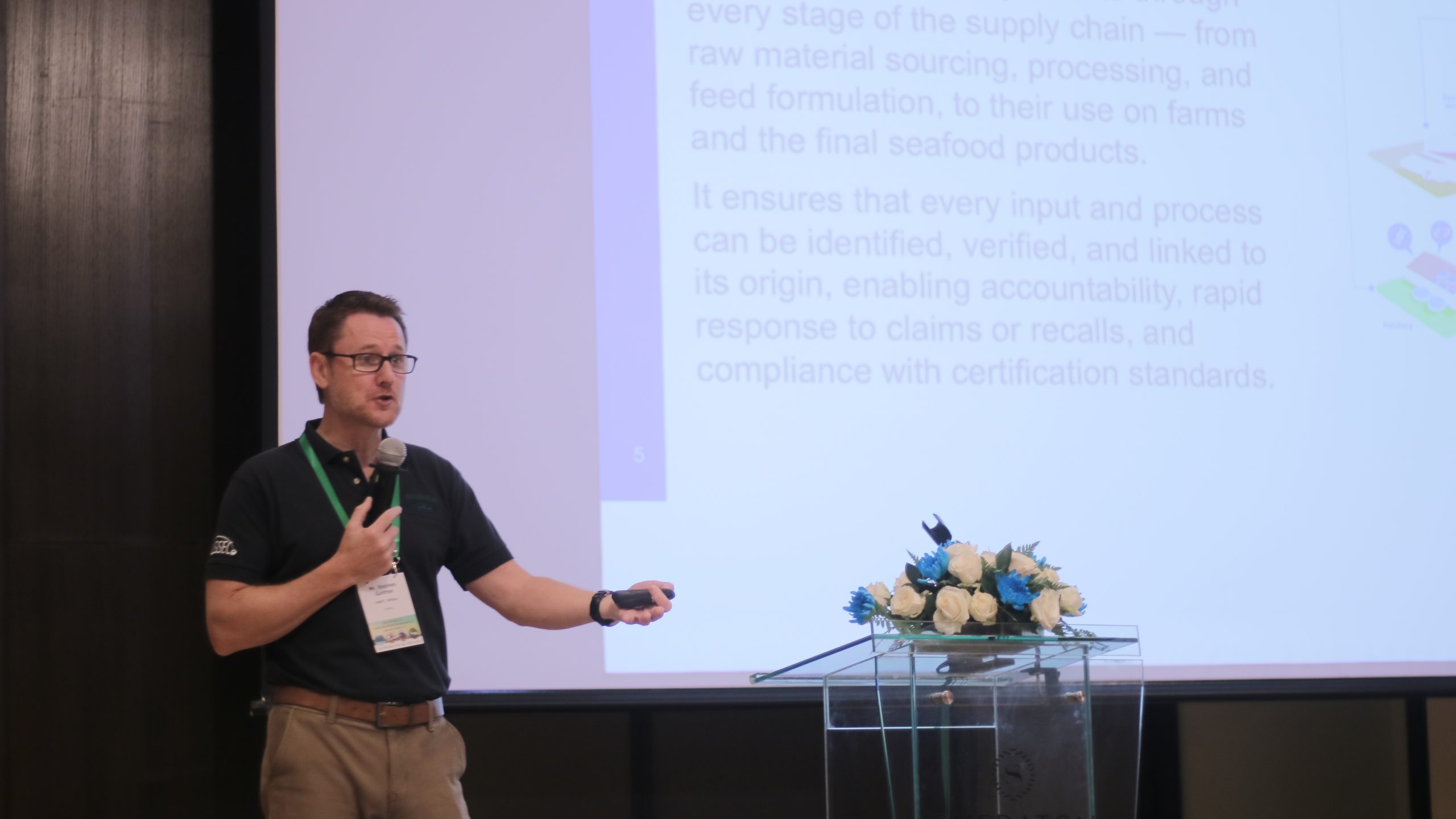
Stephen Gunther
As part of AquaChile, one of the largest salmon producers in Chile, Stephen led a lengthy investigation tracing the source of contamination—from the farming company, to the feed, and down to the raw materials. In the end, the problem was found not in the fish or the feed, but in the ink used on the packaging.
“The message here is that without rigorous traceability systems in place in the entire supply chain, we would not have been able to answer that question. And the UK retailer may have pulled the product from the shelves and the Chilean industry was going to be in trouble and we’re going to lose a lot of money. So traceability is fundamental to your business,” Stephen said.
On the other hand, traceability in aquaculture remains a significant challenge, as it involves multiple stakeholders—from farmers to supermarkets. Retailers have started to recognize that overly complex certification systems are difficult to put into practice. Instead, they are now pushing for simpler mechanisms that can guarantee products are safe, sustainable, and compliant with ESG (environmental, social, and governance) standards.
According to Stephen, one effective solution is to build a standardized and collaborative digital system, rather than relying solely on individual company efforts. Ideally, this should be developed at the national level so that the entire industry can move forward together, as is being promoted in Vietnam. This concept could also be adopted by other countries such as Indonesia and Thailand. With such collaboration, Southeast Asia has a strong opportunity to position its seafood products as a sustainable choice in the global market.
The opportunities and challenges
In addition to keynote presentations from Corey and Stephen, the workshop also featured three panel sessions. In a panel themed Adaptive Strategies to Promote Aquaculture Certifications for Seafood Exports to U.S. Markets, Syamsul Arifin from the Global Seafood Alliance explained that, in simple terms, sustainable seafood means fish sourced from healthy, well-managed stocks and caught or farmed using methods that minimize environmental impact. He noted that certification is an essential tool to ensure such sustainability claims are recognized globally.
The trend of guaranteeing food quality through certification is also starting to be adopted by local retailers. For example, in Indonesia, supermarkets such as Hero and Superindo now require their seafood suppliers to hold recognized certifications. According to him, certification labels or logos—whether on packaged products or restaurant menus—can significantly boost consumer trust.
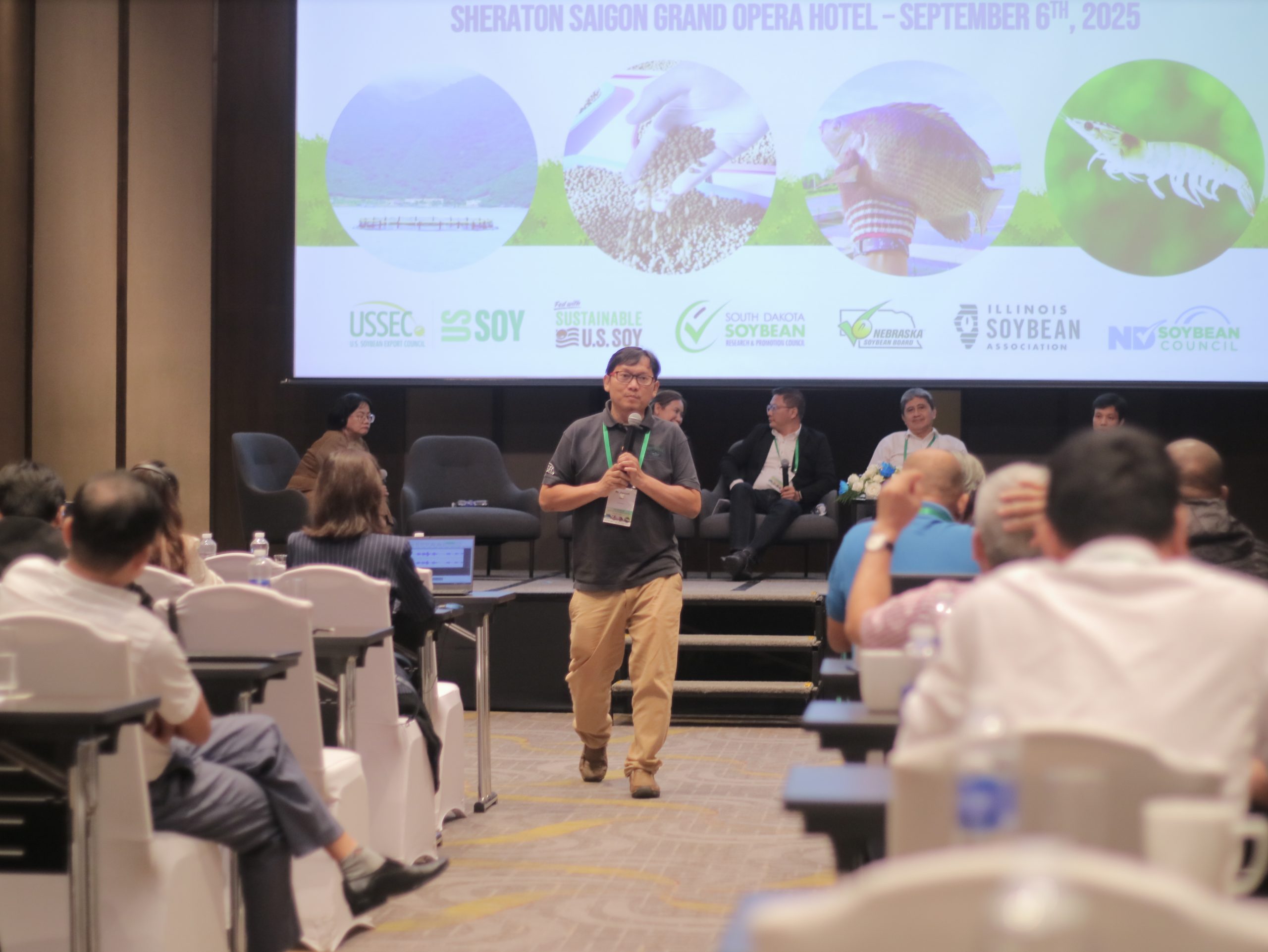
In the session The Impact of Aquaculture Improvement Projects Toward Certifications: The Progress and Milestones, Kenidas Lukman from Yayasan Sinergi Akuakultur Indonesia (YSAI) highlighted the major challenges of implementing certification in small-scale shrimp farms in Indonesia. He noted that complex licensing requirements often make it difficult to meet the initial prerequisites. In addition, many older farms are located in areas with narrow greenbelts, while labor regulations often do not align with certification standards.
Duangchai “Pla” Paungkaew from the Aquaculture Stewardship Council (ASC), in the final session Aquaculture Certifications for Smallholders: Better Approaches and Market Expectations, stressed the importance of having a shared understanding of what defines small-scale farmers. She pointed out that even smallholders, depending on their production capacity, can still have negative environmental impacts. For this reason, ASC has developed a dedicated program for small-scale farmers.
Binh Nguyen, GSA Vietnam Coordinator, explained that certification for smallholders can be approached through group schemes, cluster models, or stepwise modular frameworks. These systems also allow for cost-sharing or sponsorship to support funding needs. “In addition, there are various supporting tools such as digital technology, capacity-building programs, and partnerships that can help streamline the process,” Binh added.
***
Editor: Asep Bulkini

